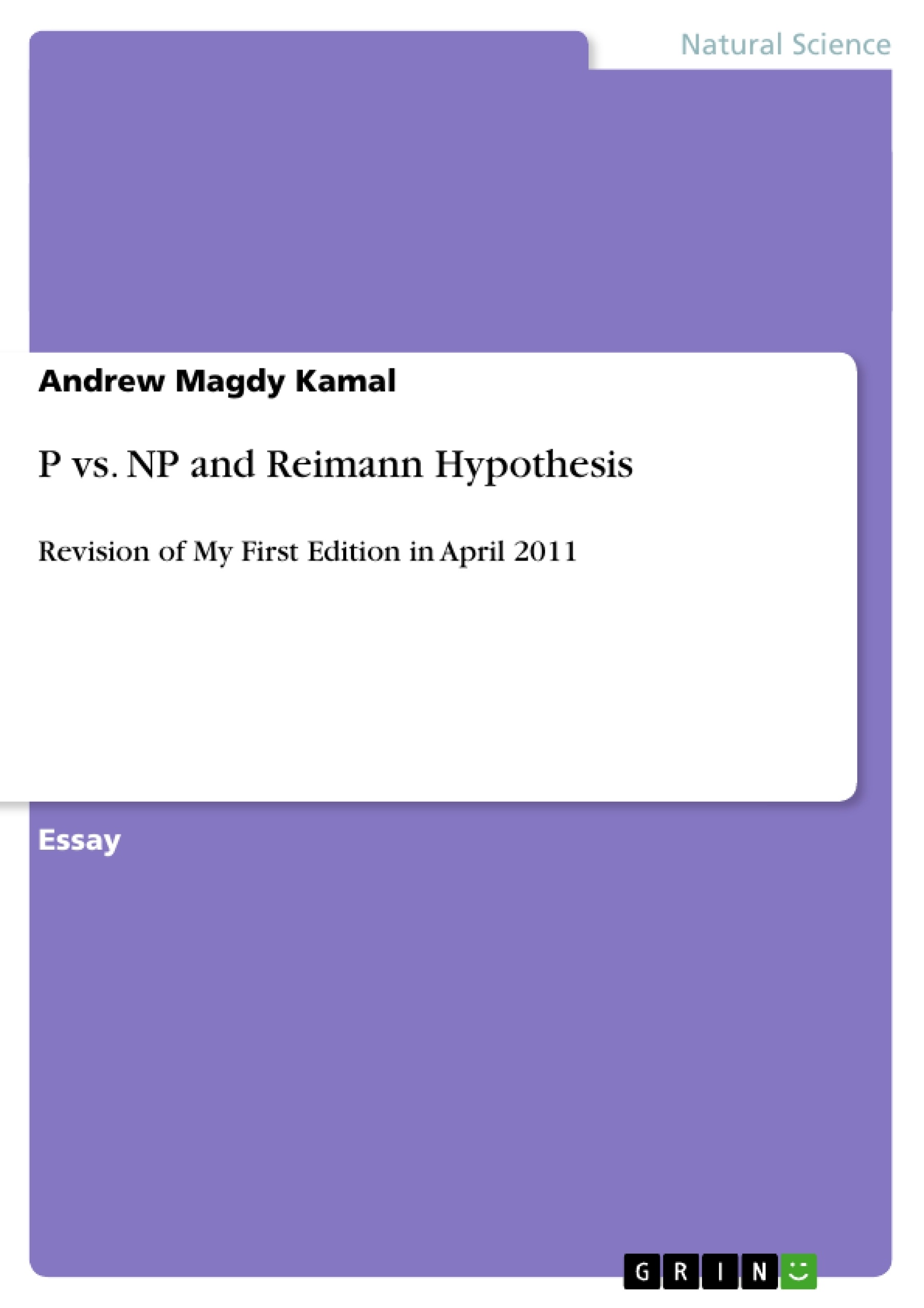This problem has been solved by me over a year ago, and published. Today I am posting a more complex and complicated version, yet put in Layman terms. I hope by doing this it will garner the attention of Clay Mathematics as well as show logical input on its mathematical endeavors.
Answers and Proofs to Two Millennium Prize Problems by Andrew Nassif
I have solved the P vs. NP problems and proved that the Zeta function in the Riemann Hypothesis in infinite. Now, for many years people have been trying to solve it, but has not provided logical solutions to the so long conundrum. However, I have solved it logically through the only possible explanation. I am not sure if it can be checked thoroughly by people who haven't solved the problem yet, but I do know that they should be able to identify that my answers do make sense indeed.
This is the basic explanation of the P vs. NP Suppose that you are organizing housing accommodations for a group of four hundred university students. Space is limited and only one hundred of the students will receive places in the dormitory. To complicate matters, the Dean has provided you with a list of pairs of incompatible students, and requested that no pair from this list appear in your final choice. This is an example of what computer scientists call an NP-problem, since it is easy to check if a given choice of one hundred students proposed by a coworker is satisfactory (i.e., no pair taken from your coworker's list also appears on the list from the Dean's office), however the task of generating such a list from scratch seems to be so hard as to be completely impractical. Indeed, the total number of ways of choosing one hundred students from the four hundred applicants is greater than the number of atoms in the known universe! Thus no future civilization could ever hope to build a supercomputer capable of solving the problem by brute force; that is, by checking every possible combination of 100 students.
My Answer is quite simple, first of all the different combination of students would logically have to represent 400!, next there are 300 pairs of students that can't be picked and 100 that will be picked. The 300 pairs can logically be represented by the following: 100!*3. The final solution to this problem is to get: ((400!)-(100!*3)) as the solution the P vs. NP. This same method can be used as a logical consideration between methods of patterns and the complexity of different group, orders, and equations, and would especially be a representation of how computer programming would work.
The reason why is that this does correspond in computer language as going with the mathematical and polynomial-time algorithms that P does equal NP in terms of mathematical citation.
This can be viewed fully here:
// Algorithm that accepts the NP-complete language SUBSET-SUM. //
// this is a polynomial-time algorithm if and only if P = NP. //
// "Polynomial-time" means it returns "yes" in polynomial time when // the answer should be "yes", and runs forever when it is "no". //
// Input: S = a finite set of integers
// Output: "yes" if any subset of S adds up to 0. // Runs forever with no output otherwise.
// Note: "Program number P" is the program obtained by // writing the integer P in binary, then
// considering that string of bits to be a
// program. Every possible program can be
// generated this way, though most do nothing // because of syntax errors.
FOR N = 1...∞
FOR P = 1...N
Run program number P for N steps with input S IF the program outputs a list of distinct integers AND the integers are all in S
AND the integers sum to 0
THEN
OUTPUT "yes" and HALT
My full solution has been identified and solved in this manner in April 2011.
Next we have the Riemann Hypothesis which has been described as: Some numbers have the special property that they cannot be expressed as the product of two smaller numbers, e.g., 2, 3, 5, 7, etc. Such numbers are calledprime numbers, and they play an important role, both in pure mathematics and its applications. The distribution of such prime numbers among all natural numbers does not follow any regular pattern, however the German mathematician G.F.B. Riemann (1826 - 1866) observed that the frequency of prime numbers is very closely related to the behavior of an elaborate function
[Abbildung in dieser Leseprobe nicht enthalten]
called the Riemann Zeta function. The Riemann hypothesis asserts that allinteresting solutions of the equation
[Abbildung in dieser Leseprobe nicht enthalten]
lie on a certain vertical straight line. This has been checked for the first 1,500,000,000 solutions. A proof that it is true for every interesting solution would shed light on many of the mysteries surrounding the distribution of prime numbers. First of all in my opinion, if Riemann is true then the Zeta function must then be infinite because it is a continuing frequency of prime numbers. Simple graphs has identified this as true as seen here:
Proven infinite and true as having both obvious and non obvious values in the numerical function. Also known as below zero and above zero. All the shown graphs are plotted correctly, coordinates with zero, and are in support of the Riemann Hypothesis of a Zeta function.
illustration not visible in this excerpt
[...]
- Quote paper
- Andrew Magdy Kamal (Author), 2011, P vs. NP and Reimann Hypothesis, Munich, GRIN Verlag, https://www.grin.com/document/230366




